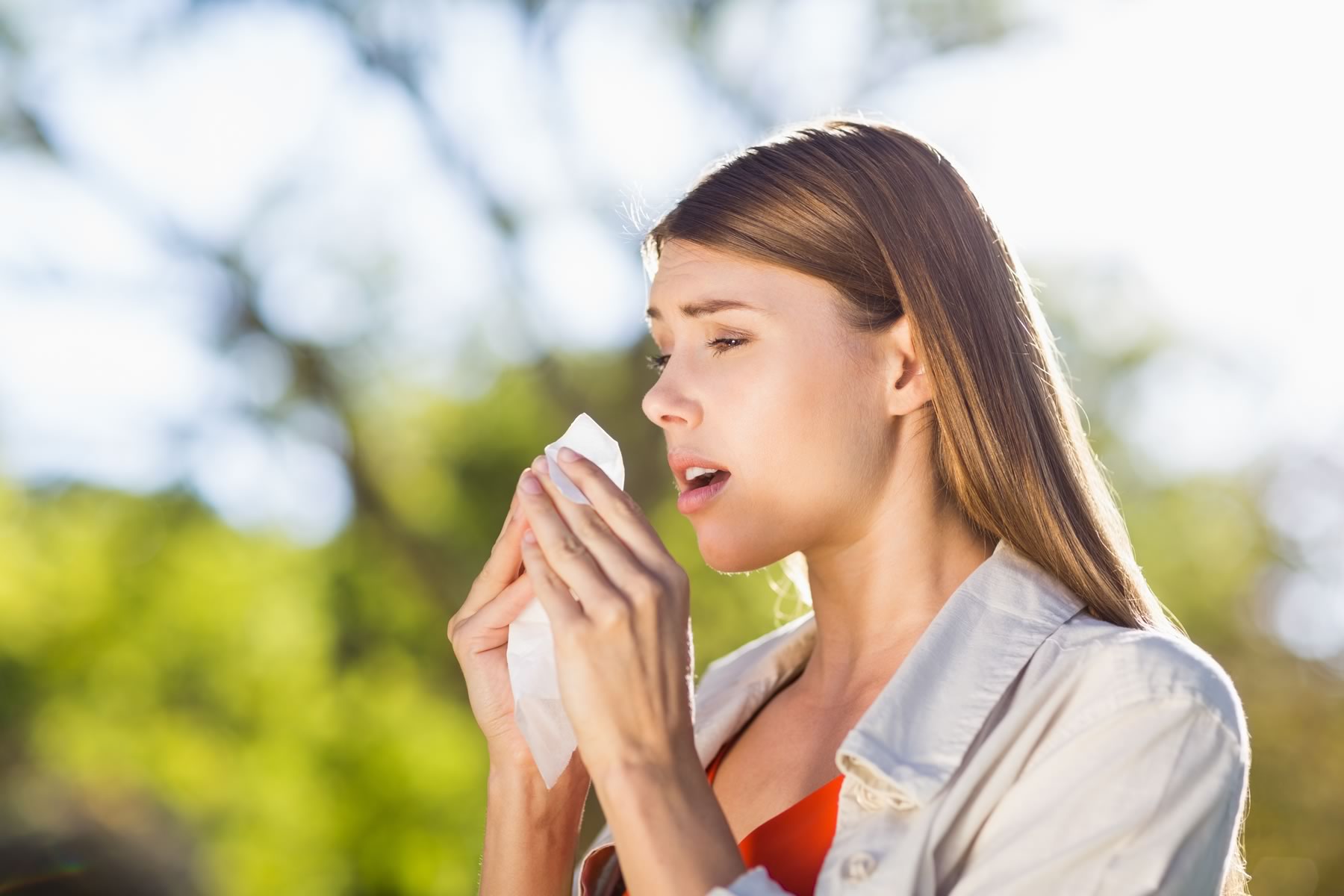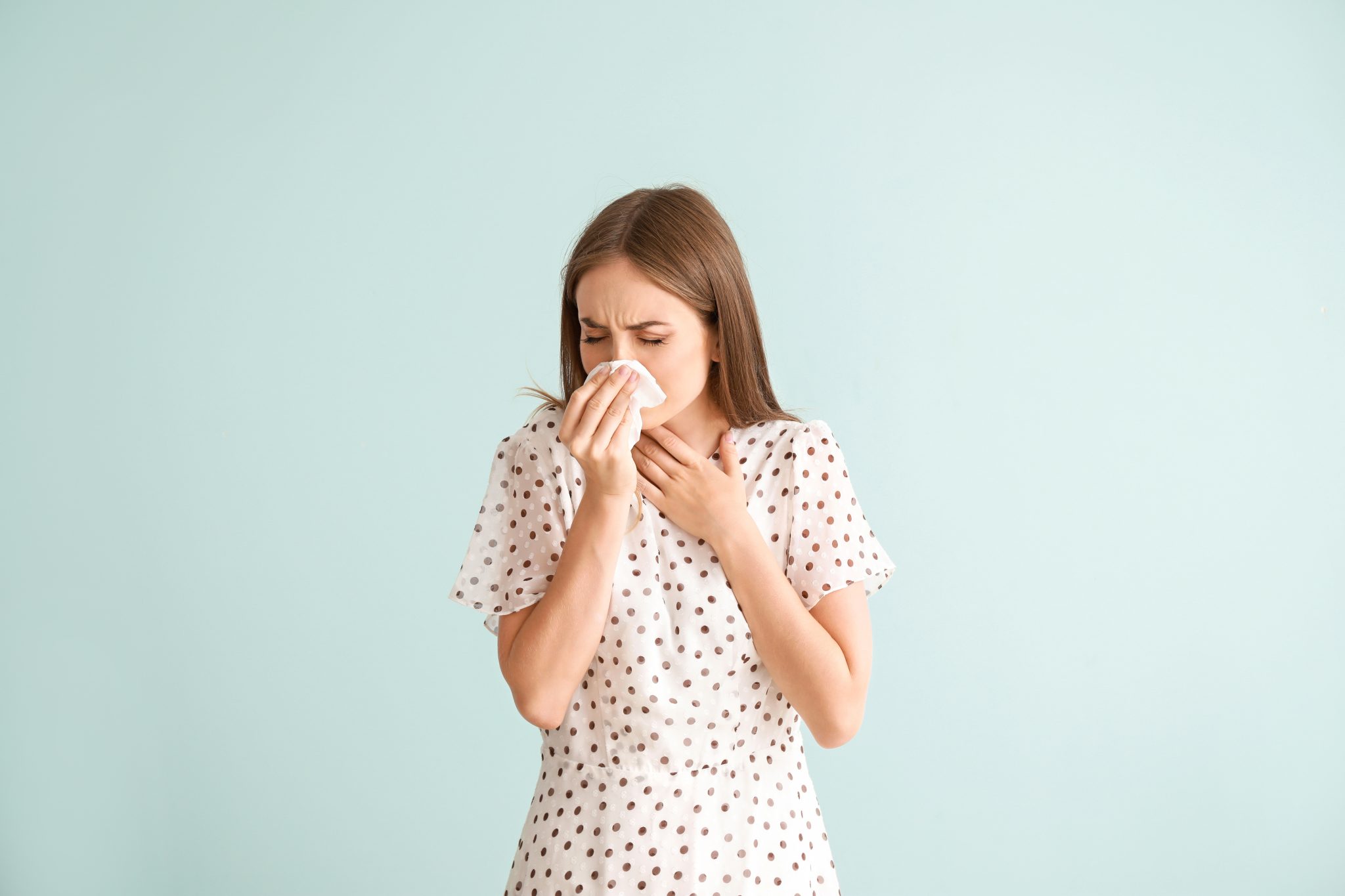A Deep Dive into Summertime Allergies
As the warmth of summer graces us with its presence, many of us are eager to embrace outdoor activities and soak up the sun. However, along with the barbecues, beach days, and sunny strolls, comes an uninvited guest: allergies. For many people, summer is synonymous with sniffling, sneezing, itchy eyes, and other symptoms that signal the onset of seasonal allergies. Let’s delve into what exactly causes summertime allergies, how they impact us, and what we can do to manage them better.
The Cause: Summer Allergens
Seasonal allergies, also known as hay fever or allergic rhinitis, are triggered by allergens—substances that the immune system mistakenly identifies as harmful. When the body encounters these allergens, it responds by producing a type of antibody called Immunoglobulin E (IgE), leading to an allergic reaction.
During the summer months, the primary culprits are pollens from grasses, weeds, and trees. While spring is most commonly associated with tree pollen allergies, summertime often sees a rise in grass pollens (such as Timothy grass, Kentucky bluegrass, and ryegrass) and weed pollens (like ragweed, sagebrush, and pigweed). Mold spores, which thrive in warm, humid environments, also become more prevalent during summer, contributing to allergic symptoms.
The Impact: Symptoms of Summertime Allergies
The allergic reaction sparked by these allergens can result in a variety of allergy symptoms, many of which can be quite discomforting. These symptoms typically include:
- Sneezing
- Runny or congested nose
- Itchy, watery, or red eyes
- Coughing
- Itchy throat or ears
- Fatigue
These symptoms can severely affect an individual’s quality of life, leading to disturbed sleep, irritability, and an inability to fully enjoy outdoor activities during the summer season.

Managing Summertime Allergies
Various strategies can help manage the symptoms of seasonal allergies and make your summer a lot more enjoyable.
1. Awareness and Avoidance
Stay updated on local pollen forecasts available online such as the United Allergy Service Pollen Forecast or through mobile apps such as myAllergyPal®, and try to limit your outdoor activities on high pollen count days. Additionally, during these peak periods, keep your windows closed and use air conditioning to keep allergens at bay.
2. Allergy Medication
Over-the-counter antihistamines can be effective for relieving allergy symptoms like sneezing, itching, runny nose, and watery eyes. Decongestants may also help to relieve a stuffy nose. For those with severe symptoms, a provider may prescribe stronger medications or recommend allergy shots (immunotherapy).
3. Good Hygiene Practices
After spending time outdoors, be sure to shower and change into fresh clothes to remove any pollen that may have settled on your skin and clothing. It’s also beneficial to wash your hands often and avoid touching your face, especially your eyes, to prevent direct introduction of allergens.
4. Home Environment Care
Use high-efficiency particulate air (HEPA) filters in your home to trap pollen and other allergens. Regular cleaning and vacuuming also help to keep your indoor environment allergen-free.
The Solution: Lasting Allergy Relief
Despite best efforts to manage allergy symptoms, over-the-counter medications and preventative measures might not be enough for some individuals. In such cases, it’s crucial to take the next step—getting tested for allergies. By identifying specific triggers, you can not only avoid those allergens but also receive targeted treatment for more effective symptom relief.
Through your provider at an allergy center near you, United Allergy Services offers comprehensive allergy testing that can pinpoint the exact allergens causing your discomfort. This personalized approach allows for a more accurate diagnosis and effective treatment plan.
For some, the path to relief could lie in immunotherapy, a treatment approach that helps the body build tolerance to allergens. United Allergy Services offers allergy shots (subcutaneous immunotherapy) and allergy drops (sublingual immunotherapy) tailored to your specific allergen sensitivities. Over time, immunotherapy can help to reduce or even eliminate your allergic responses, enabling you to fully enjoy summer.
In conclusion, while summertime allergies can put a damper on this vibrant season, there are many avenues to manage and overcome them, including avoidance, medication, and medical treatments like immunotherapy. Don’t let allergies hold you back—explore options with your provider at a local allergy center to find the best treatment path for you.
FSA/HSA Plans for Allergy Services
Environmental allergies are a common ailment that affects approximately 50 million Americans every year. Whether you suffer from year round or just seasonal allergies, you may be able to use your tax-free FSA/HSA funds to help you save money on education, allergy testing, and treatments. If you struggle with allergy symptoms—itchy eyes, congestion, and non-stop sneezing—you know how tough the spring and summer months can be. Over-the-counter drugs can help, but sometimes these remedies aren’t enough. As you compare options, you may notice the hefty price tag. Luckily, your health savings account (HSA) or flexible spending account (FSA) may offer some savings to your allergy relief.
What Exactly is an FSA or HSA Health Care Plan?
Flexible Spending Accounts (FSA) or Health Savings Accounts (HSA) are medical savings accounts with tax benefits, designed to allow you to set aside pre-tax savings to go towards your treatments, healthcare and other medical expenses.
Can I Use My FSA/HSA Plan for Allergy Testing?
For the majority of healthcare plans environmental and food allergy testing is an eligible FSA/HSA expenditure, meaning they allow the tests as a qualified medical expense. To make sure you’re covered, we recommend getting in touch with your provider to confirm your inclusions.
A qualified medical expense is defined in IRS Publication 502 as the cost of treatment, cure, diagnosis, mitigation or prevention of a disease. The expense must be used principally to prevent or help ease the symptoms of a physical/mental illness or disability in order to meet the criteria for HSA and FSA. Environmental sensitivity tests work to identify allergic triggers that may cause discomfort and allow you to avoid or mitigate the exposure. Similarly, food sensitivity tests identify digestive issues so you can alter your diet to try and prevent things like bloating, nausea and stomach cramps.
Other Allergy Related Questions?
Our team wants to help you make the most out of your benefits before they expire on January 1st. Visit our FAQ page for more insight, or find an allergy center near you by clicking here.
Eosinophilic Esophagitis (EoE)
Eosinophilic esophagitis (EoE) is a recognized diagnosis that produces symptoms related to dysfunction of the esophagus. In EoE, large amounts of white blood cells, specifically eosinophils, collect in the inner lining of the esophagus resulting in inflammation. Typically, the esophagus is free from eosinophils and resulting inflammation, and so in EoE, a patient will begin to notice a difference in the way they can eat and swallow food. This condition can be difficult to diagnose as other conditions can present with eosinophils in the esophagus, and historically EoE has not been a common or well-known disease. Awareness has significantly improved however in the last decade, and patients are being recognized and diagnosed much earlier. This week, the FDA has approved the first ever treatment for EoE.
Symptoms of EoE
Many EoE patients also have symptoms of one or more allergic disorders like asthma, allergic rhinitis, atopic dermatitis (eczema) and food allergy. It is important for EoE patients to be properly assessed and tested for potential allergens as well as properly diagnosed for their atopic conditions. Similar to proper diagnosis, it is crucial that any and all allergic aspects of EoE can be properly treated in conjunction with management of the EoE. Patients benefit from a team of providers working together such as a primary care provider, allergy specialist, and gastroenterology specialist.
Early diagnosis of this chronic condition is important so patients can be educated and properly managed, sparing them from discomfort, malnutrition, and even life-threatening situations. An emergent situation can arise if inflammation becomes too great and causes narrowing in the esophagus, trapping swallowed food. In younger children, EoE typically presents with poor feeding, failure to grow properly, vomiting, reflux symptoms, and abdominal pain, whereas in adolescents and adults EoE most often presents with dysphagia (trouble or painful swallowing) and emergent esophageal food impactions.
Allergy Correlation
Airborne allergies can play a role, however adverse immune responses to food are the main cause of EoE in many patients. It can be more difficult to properly diagnose food allergies in EoE patients because many do not present with the typical symptoms associated with IgE mediated food allergy. Instead of immediate itching, flushing, hives and vomiting after ingestion of the offending food, the reactions can be delayed over hours or days. Milk, egg, soy and wheat are recognized as the most common triggers for EoE, however, conventional allergy tests often fail to detect sensitivity to the foods causing EoE. This is because most food allergy reactions in EoE are delayed and caused primarily by immune mechanisms other than classical IgE-mediated food allergy.
Diagnosis
Other than proper identification and diagnosis of atopic conditions, EoE must also be properly diagnosed itself as a disease. If EoE is suspected, a specialist performs an upper endoscopy, where a small tube with embedded camera is passed down the esophagus. The tube not only has a camera and light for inspection, but a small device to take samples, or biopsies of the esophagus. The biopsies of the esophagus are examined under a microscope for eosinophils and inflammation and are necessary to diagnose EoE. A provider looks for appropriate symptoms that were described above, visual inspection of the esophagus, and examination of tissue biopsies to make the final diagnosis of EoE.
Managing EoE
There are many viable options to managing EoE effectively. Food sensitivities or allergies can be managed by removing those offending foods from a person’s diet, but only under the direct guidance and supervision of a provider. A provider can advise eliminating a specific food, or a food group based on individual history, examination, and diagnosis. This elimination approach can be helpful to some, but it is important to only remove what is advised, and a medical provider will closely monitor a person and regularly discuss nutrition and intake. Many times, a dietician is added to the medical care team to make sure a person is still receiving all the necessary nutrients. A provider’s goal is to carefully add back any foods that can in fact be tolerated and are proven not to incite eosinophils in the esophagus.
Aside from adjustments to a person’s diet, there are some medications providers use to help provide symptom relief and management of the EoE. It is important to note that aside from the first medication being approved by the U.S. Food and Drug Administration (FDA) to treat EoE, typical options for treatment include proton pump inhibitors and steroids. Proton pump inhibitors (PPIs) reduce acid production in the stomach and have also been found to be able to reduce esophageal inflammation in some patients with EoE. PPIs are very commonly used as a frontline therapeutic for EoE patients. If PPIs do not work for a patient, another option may be swallowed topical corticosteroids. Swallowing small prescribed doses of corticosteroids so they come in direct contact with and treat the inner lining of the esophagus is the most common treatment.
Amanda Hofmann, MPAS, PA-C, is a graduate of Duquesne University, in Pittsburgh, Pennsylvania. After spending eight years in clinical practice, she joined United Allergy Services as the vice president of clinical. Amanda is also the past president of the Association of PAs in Allergy, Asthma, and Immunology.
United Allergy Services is also on Facebook, LinkedIn, or Twitter. See other interesting and related articles on the UAS Blog.
Football, Food, and Fall Allergies
Fall has arrived and so have shorter days, cooler weather, and football season! Unfortunately for some, football, food and fall allergies go hand in hand. This is especially true in the southern and western regions of the US where some weed allergens peak in the fall. The idea of sneezing and wheezing with itchy, watery eyes while watching a game or practice can be dreadful. Perhaps more concerning is visiting major sports venues if you or a loved one have food allergies.
Outdoor Allergies
It is common to check the weather forecast to plan for warm or cool temperatures when attending sporting events. A good habit may be to also check the local pollen counts in the area. Keep in mind that peak pollen times are typically in the first half of the day, specifically 5 a.m. to 10 a.m. Attending practices or games midday, in the afternoon, or in the evening may help to reduce exposures.
Avoidance for Fall Allergies
If you have a future MVP of your own, packing some wet wipes could be helpful. Wiping down their hands, face and neck can combat those distracting allergy symptoms when out on the field. Also, verify any allergy medication they take will not make them drowsy during their practice or game. Non-sedating medication options or allergen immunotherapy may be worth discussing with their provider.
After practices or games, changing out of the clothing worn while participating or spectating can help alleviate allergy symptoms. Also helpful is an immediate shower, particularly before crawling into bed. Showering will help to wash away any allergens that have adhered themselves to your skin or hair. This is especially important to keep them out of the immediate space and air you breath in all night.
Food Allergies
If food allergies are a concern, planning ahead can alleviate a lot of anxiety and allow for a smooth trip. Always make sure to carry a minimum of two epinephrine auto injectors if one is prescribed to you or a loved one. Make sure the epinephrine autoinjector is carried in a way it can be accessed and administered within 60 seconds of a need arising. The Food Allergy Research and Education (FARE) organization recommends “to reach out directly to the venue to learn more about their efforts” in regard to additional steps they may be taking to ensure your family’s safety at the game.
Food Allergy Tips
Some suggested topics to cover when you contact the venues are:
- Availability of allergy friendly games, sections, or suites
- Is power washing utilized for seating, and traffic pathways at the stadium?
- Are ingredient lists available upon request at the concessions?
- Policy for bringing in safe meals and snacks
- Locations for emergency responders
Planning and communication make it possible to avoid fall allergies and enjoy football season. Communicate with family, friends, coaches, players, and venues, and create a plan that is right for your family. However, missing out on football season does not have to be part of that plan. If you or your loved ones are not quite sure if allergies are playing a roll, or if the allergy medication is just is not cutting it, consider contacting your provider and discussing allergy testing and starting allergen immunotherapy.
Amanda Hofmann, MPAS, PA-C, is a graduate of Duquesne University, in Pittsburgh, Pennsylvania. After spending eight years in clinical practice, she joined United Allergy Services as the vice president of clinical. Amanda is also the past president of the Association of PAs in Allergy, Asthma, and Immunology.
United Allergy Services is also on Facebook, LinkedIn, or Twitter. See other interesting and related articles on the UAS Blog.






